- Why Choose a Carbon Fibre Composite Pad?
- Watch the Video
- What Problems Are Solved by Composite Pads?
- Why Choose a Carbon Fibre Composite Pad for Pipe Protection?
- Step-by-Step Installation Guide
- Case Study: Carbon Fibre Composite Pads in Action at an Australian Oil Refinery
- Frequently Asked Questions
- Learn More
Why Choose a Carbon Fibre Composite Pad?
Installing a carbon fibre composite pad is a proven way to protect pipes from corrosion, wear, and costly failures. A Belzona Composite Pad, also known as a wear pad, is a specialised pipe support system designed to isolate pipes and prevent metal-on-metal contact. By doing so, it helps reduce structural stress and protects against common causes of damage in piping systems.
Watch the Video
What Problems Are Solved by Composite Pads?
The outer surfaces of piping systems are constantly exposed to environmental and operational stresses, leading to corrosion, wear, and weakening over time. Left unchecked, these issues can result in costly downtime and even critical failures. Reinforcing the pipe using a Belzona Composite Pad solves these issues, mitigating downtime.
Two Common Forms of Potential Failure Include:
- Metal-to-metal wear caused by rubbing between the pipe and its support due to thermal expansion, contraction, and pressure fluctuations.
- Galvanic corrosion which occurs when dissimilar metals are in contact in the presence of an electrolyte, accelerating the rate of corrosion.
A carbon fibre composite pad acts as a non-metallic barrier to eliminate direct metal to metal contact, significantly extending the service life of the piping system.
Why Choose a Carbon Fibre Composite Pad for Pipe Protection?
Belzona Composite Pads offer significant advantages over traditional steel wear plates, making them a safer, more efficient choice for pipe protection:
- A carbon fibre composite pad is up to 5 x lighter than steel. This reduces handling risks and makes installation easier, especially on large-diameter pipes.
- On-site manufacture. Pads can be moulded directly onto your pipe for a precise fit, unlike rolled steel plates that are often under- or over-rolled when produced offsite.
- Get a perfect fit every time. This eliminates the need for rework or adjustments during installation.
- Lower thermal conductivity, using a carbon fibre composite material reduces heat transfer compared to steel, improving operational safety.
- Superior wear resistance. A Belzona Composite Pad is designed to withstand mechanical stresses and extend service life.
- Does not corrode, even in harsh industrial environments.
Step-by-Step Installation Guide
In this guide, we’ll explain the process of installing a carbon fibre composite pad using the Belzona SuperWrap II system. This solution ensures your repair is durable, compliant, and provides a long-term solution.
Step 1: Prepare the Surface
Ensure that the geometry and defective area to be repaired are as per the design. Extend the preparation zone by around 76 mm (3 inches) beyond the defect in all directions.
The pipe can be used as a former, however a plastic sheet or Belzona 9382 (Release Film) should be applied over the substrate to avoid the composite pad adhering, and allowing the system to release for installation later.
Step 2: Measure and Cut the Reinforcement Sheet
Cut the Belzona 9381 (Fibreglass Reinforcement Sheet) to the required dimensions and number of layers to fully cover the repair area.
Step 3: Wet Out the Reinforcement Sheet
Lay fabric flat and saturate it with the selected Belzona SuperWrap II resin on the fibreglass side. Apply Belzona 9382 (Release Film) or polyethylene film to one side and remove trapped air with an applicator.
Step 4: Form the Carbon Fibre Composite Pad
While the reinforcement fabric is still wet, lay the saturated composite pad directly onto the released pipe ( to allow it to take the exact shape and dimensions of the pipe).
Once positioned, place a polyethylene sheet (similar in thickness to a Belzona mixing board) over the pad.
Secure with straps, tightening from one side to the other. Apply uniform tension until resin is visibly extruding from the sides, ensuring proper compression and full wet-out of the laminate.
Step 5: Allow the Composite Pad to Cure
Leave the pad to cure – check the relevant IFU for cure times. Once cured, remove the straps, formers, and clean the pad.
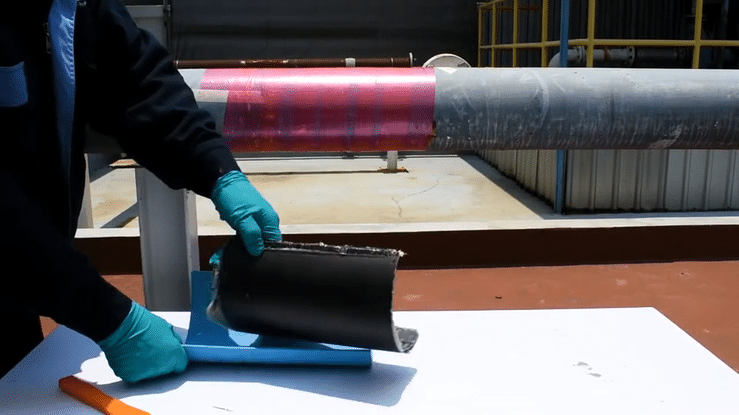
Step 6: Prepare the Composite Pad and Pipe Substrate
Prior to bonding, the composite pad should be frost blasted on both sides. A Belzona 1300 Series coating can be applied to the external side of the to provide abrasion resistance, if required.
Clean the pipe substrate thoroughly and grit blast to SSPC-SP10 / NACE 2 / Sa 2 ½ (Near White Metal) with a 3 mil (75 µm) anchor profile.
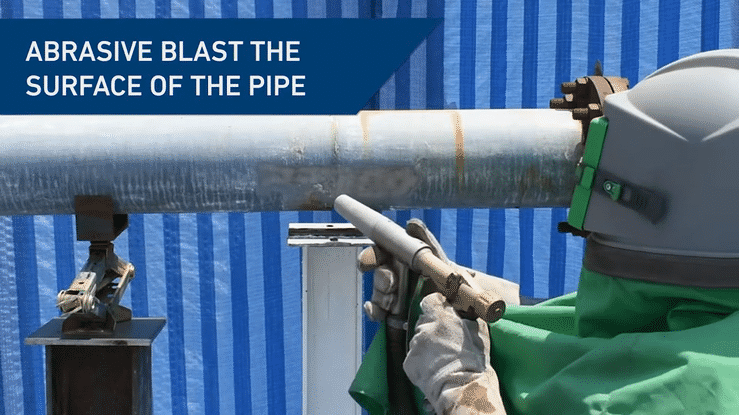
Fill pits or rebuild the surface to its original wall thickness using a Belzona paste-grade product before application of the Composite Pad.
Step 7: Apply the Belzona Bonding Material
Mix the selected Belzona paste grade bonding material or the Belzona SuperWrap II resin as per the products IFU and apply immediately.

Wet out the pipe substrate and the composite pad with your selected bonding material to ensure complete coverage.
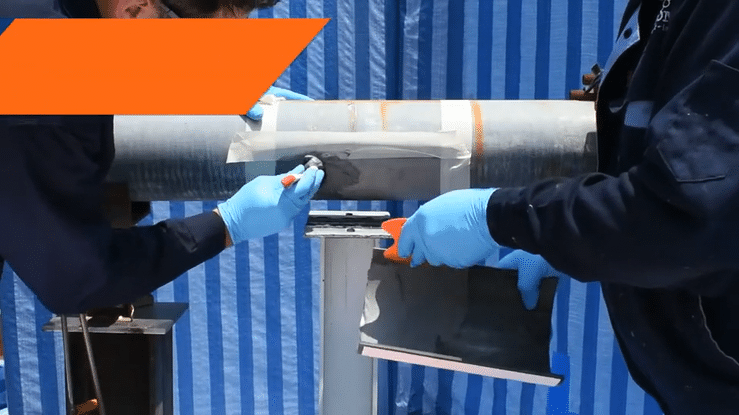
Step 8: Install the Belzona Composite Pad
Jack up the pipe, align the cured pad in place on its support, then gently lower the pipe to compress it onto the pad and ensure proper bonding.

Step 9: Final Cure and Inspection
Allow the system to fully cure as per the Belzona SuperWrap II resin IFU then remove the Belzona 9382 (Release Film).
Step 10: Inspection
Make sure you inspect for:
- Dry spots or delamination
- Cracks or wrinkles
- Pitting or foreign material
Case Study: Carbon Fibre Composite Pads in Action at an Australian Oil Refinery
The authorised Distributor of Belzona in Australia, Rezitech Services PTY Ltd., replaced rolled steel plates with carbon fibre composite pads for one of Australia’s leading Oil Refinery Operators and Fuel Retailers. The Client was experiencing significant external corrosion on several of their main pipelines.
The refinery had been using heavy 400×400 mm steel plates bonded with Belzona 1111 (Super Metal) to combat external corrosion on pipelines. While effective, this approach meant long lead times, handling risks, fit issues, and dangerously hot surfaces in summer.
Rezitech proposed on-site moulded carbon fibre composite pads using the Belzona SuperWrap II system. These pads were lighter, corrosion-resistant, and delivered a perfect fit every time, reducing installation time and improving safety.




Charlie Farrant, Belzona Technical Specialist for Rezitech, said:
“The Belzona composite pad is made from a carbon fibre composite material that is lightweight yet possesses excellent mechanical properties. As a result, the pad is ideal for use as a ‘doubler plate’ on holed or thin-walled pipes or as a pipe wear pad.”
Such has been the success of the application that the Client is now looking to apply the pads in other areas of the refinery. Belzona has conducted several tests at their facility in Thailand to ascertain the effectiveness of the Belzona Composite Pad on different pipe configurations.


A spokesperson for the Oil Refinery said:
“This week, we installed our first Belzona composite pad to one of our main fuel lines at our Oil Refinery. The installation process was simple and effective along with being ergonomically friendly for the installers, given the significant weight difference to that of a steel plate.”
Following a recent inspection, the repaired section was found to be in excellent condition, maintaining both its structural integrity and resistance to further corrosion. The application has successfully extended the service life of the pipe, ensuring continued safe and reliable operation.
Frequently Asked Questions
What is a carbon fibre composite pad?
A carbon fibre composite pad is a lightweight, corrosion-resistant support or wear pad designed to prevent metal-to-metal contact on pipes, reducing wear and extending service life.
How long does a carbon fibre composite pad last?
When correctly installed and maintained, carbon fibre composite pads can provide many years of protection, often outlasting traditional steel alternatives.
What industries would benefit from this solution?
Carbon fibre composite pads are commonly used in oil and gas, petrochemical, power generation, and other industries where piping systems are subject to corrosion, abrasion, and movement.
Learn More
Long Term Protection of Valves Pipes and Fittings
Read Case Study: Oil_Refinery_Adopts_Belzona_Composite_Pad_for_Pipeline_Repair
Contact Your Local Distributor to Learn More About Belzona Composite Pads

Rhiannon has been working for Belzona for over 16 years and has recently joined the Marketing Team in a Supervisory role. Her expertise lies in lead generation, social media strategy, content marketing and email campaigns.


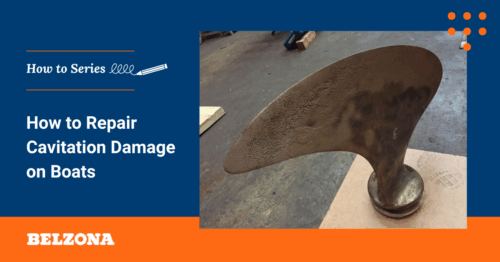
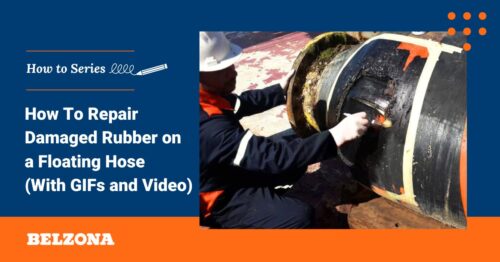
In Australia I joined Redic Industries in 1981 and became aquainted with Belzona as part of our porfolio the company later changed it’s name to Rezitech Services and I retired in 2012 after a lot of success with Belzona. ( 31 years ) Having met Ron Campbell and Geoff Binks during their travels I enjoy the blogs and information from Belzona .